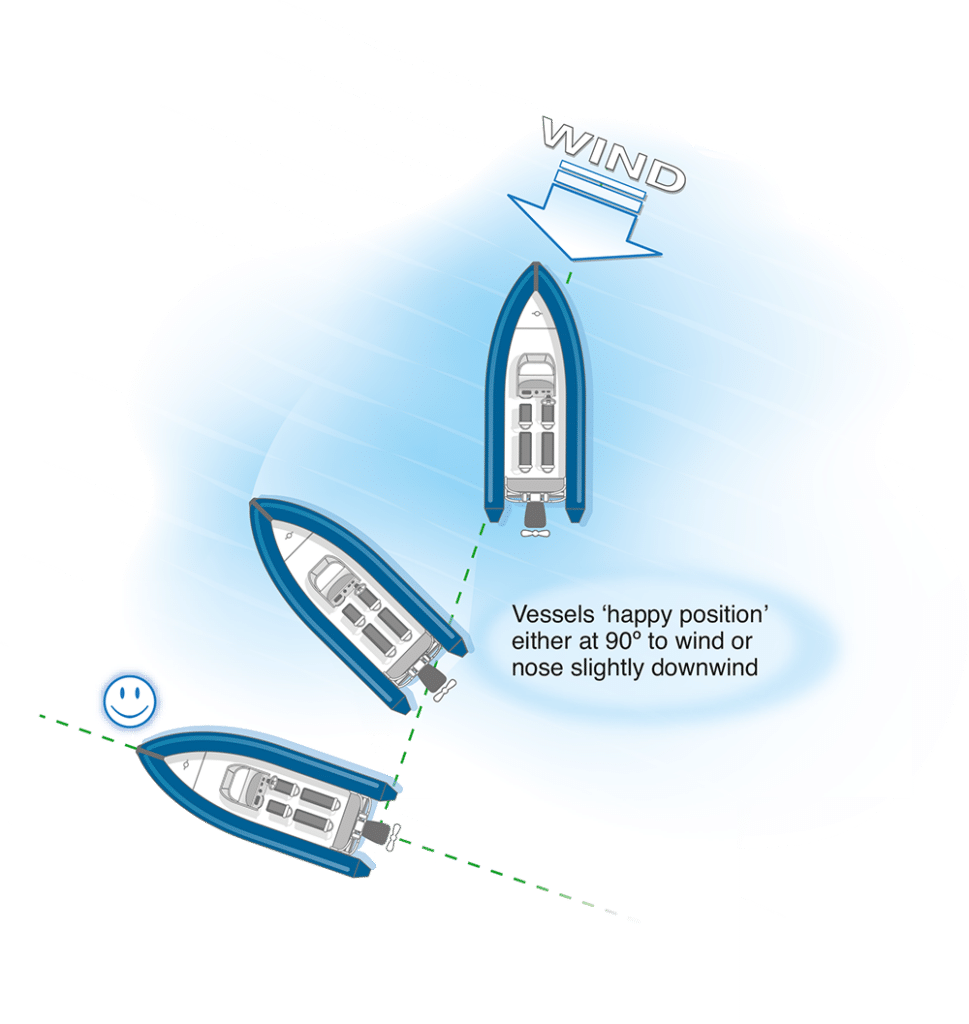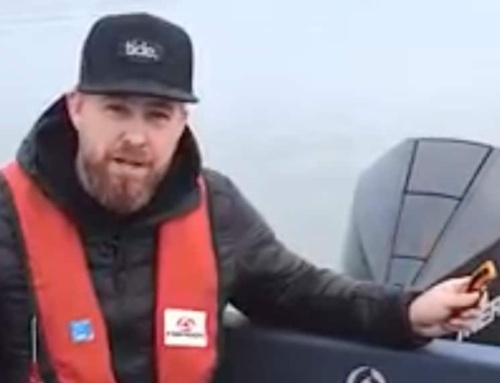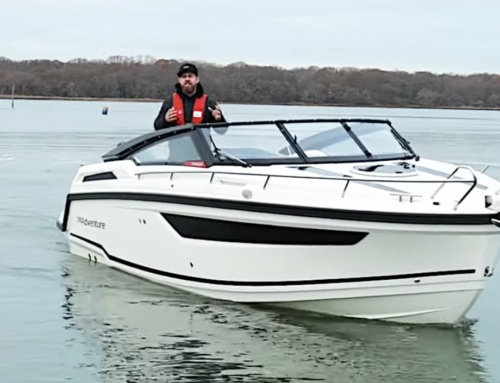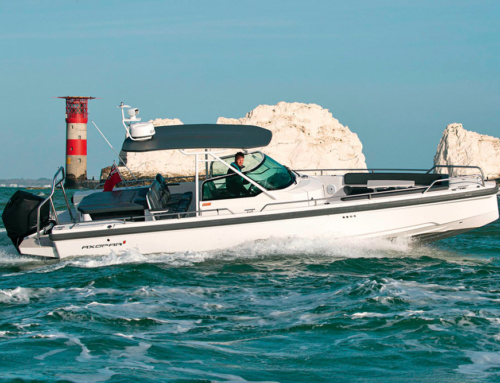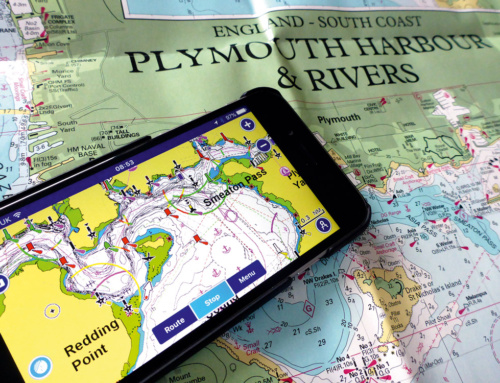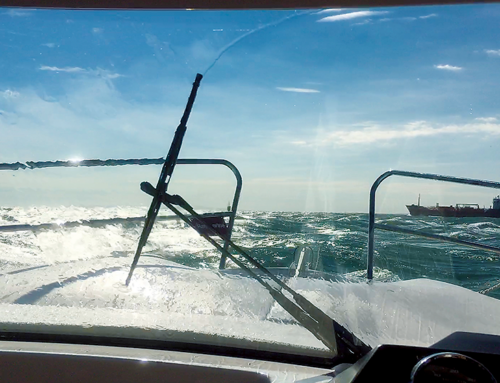You’ve bought the boat and the safety gear and you’ve booked a Powerboat Level 2 course, but berthing is still a challenge. What can you do to make it all a bit easier and more relaxing? Paul Glatzel offers some suggestions …
You certainly aren’t alone if you occasionally, or indeed regularly, find getting your boat alongside a pontoon or into a finger berth challenging. Ask any instructor or commercial skipper and they have bad days and moments too – often more frequently than they’d care to admit!
So what can you do to make it all a bit easier?
To be able to handle your boat well you need to combine an understanding of how the boat will react to the conditions you are in and how to work with and manage the way the boat reacts, and having the confidence to do so. Confidence in marina situations is like many things in life – it comes from knowledge and practice.
Let’s start by looking at how your boat reacts to the elements, i.e. wind and tide. Really key to being able to handle your boat well in a ‘close-quarter’ situation is having the capacity to predict what the vessel will do depending on the direction of the wind relative to the boat’s orientation.
The great thing is that all powerboats react very predictably to the wind – the question is how! The first key principle is that powerboats are only ‘happy’ when they are lying side on to the wind. Whether you start with your bow or the stern facing the wind, the boat will always rotate to lie side on to the wind.
What differs among different models/layouts of powerboats is the speed at which they rotate to this ‘happy’ position. Four-berth family cruisers with high topsides and lots of canvas typically have very light bows and heavy sterns. They tend to rotate very rapidly and actually often do so as quickly from stern to wind as they do from bow to wind.
So what can you do about this tendency to want to rotate to lie beam on to the wind?
By knowing what your angle is relative to the wind you can predict what will happen and so use your boat-handling skills to keep control of the bow, or it may be that you are happy to let the bow get taken if there is space for it to do so. Being aware of what will happen and being able to let it happen or work with it immediately makes life more relaxing and sets you up better in the marina.
So what about tide or stream?
When trying to understand how the tide or stream will affect your boat, the mistake I often see is people looking to see what the tidal height is and whether it is rising or falling. This is the wrong thing to look for, as what really matters is how the water is flowing where your boat is and therefore what direction the boat will be pushed in. The tide moves the whole body of water around the boat and in itself doesn’t rotate the boat, but if the tide is flowing around objects or over an uneven seabed the disturbed water might create less predictable movements. The key is to watch the water and see how it is moving so you can factor this into your planning stage.
Before any manoeuvre you need to be aware of what depth of water you have around you and what other boats are doing where you are manoeuvring. This gathering of data – wind, tide/stream, depth and other craft – is the ‘assessment’ phase. Assess well and the next stage, ‘planning’, will go a whole lot better.
The planning element marries an understanding of how your boat handles (Does it have one or two engines?)
Does it have a bow thruster? How quickly does it get pushed around by the wind?) to the specifics of the berthing situation you are facing. We’ll look at how to create a plan for a variety of berths in the next article, but before we do so, you need to develop that understanding of how your boat reacts and put a bit of time and practice in.
So what exercises can you do to develop this understanding and thus make handling your boat and planning manoeuvres easier?
Exercise 1:
Find a clear patch of water. Head directly into wind. Stop. Once the boat has stopped moving, how quickly does it rotate to its ‘happy’ place? Does it rotate at a constant speed? How quick is it? How much does it vary at different wind speeds. Sometimes you’ll find the bow rotates so fast it ‘overshoots’ this side-on position, but then the bow will rotate back to the happy position as it settles.
Exercise 2:
Do the same but with the stern into the wind. Try it with and without the canvas up as this can make a big difference to the speed of rotation, especially if wind fills the enclosed cockpit area through an open section at the stern.
Exercise 3:
Find a large open area of water to practise holding the bow into the wind. Position bow to wind. Watch the bow. Which way is it starting to move? If to the left/port, turn hard to the right and into/out of gear (half-second movements) to stop the boat rotating – we call this ‘steer then gear’. Centre the helm, then go again. Try to hold the bow for a few minutes without losing it.
Exercise 4:
Repeat but stern to wind.
Exercise 5:
If there is any tide/stream, find a position where you look to your right or left at an object and ‘stem the tide’ to hold position relative to the object. Try ‘ferry gliding’. Angle the bow slightly left and work against the tide to crab sideways while still keeping the object directly to your side.
Exercise 6:
Put the practice from all of these exercises together by finding a mooring buoy with a bit of space around it, and hopefully some wind and tide/stream, and try and position the vessel two boat lengths away. Hold for one minute. Halve the distance, hold for one minute. Halve the distance, etc. Keep getting closer until you are happy holding the boat against the wind and tide/stream a metre or so away for any length of time.
If you get out and learn about your boat using these exercises, I guarantee you’ll start to feel happier in close-quarter situations. In the next article we’ll move these skills into the marina environment and look at some specific berths and how to make coming into those easier.
Have fun afloat!
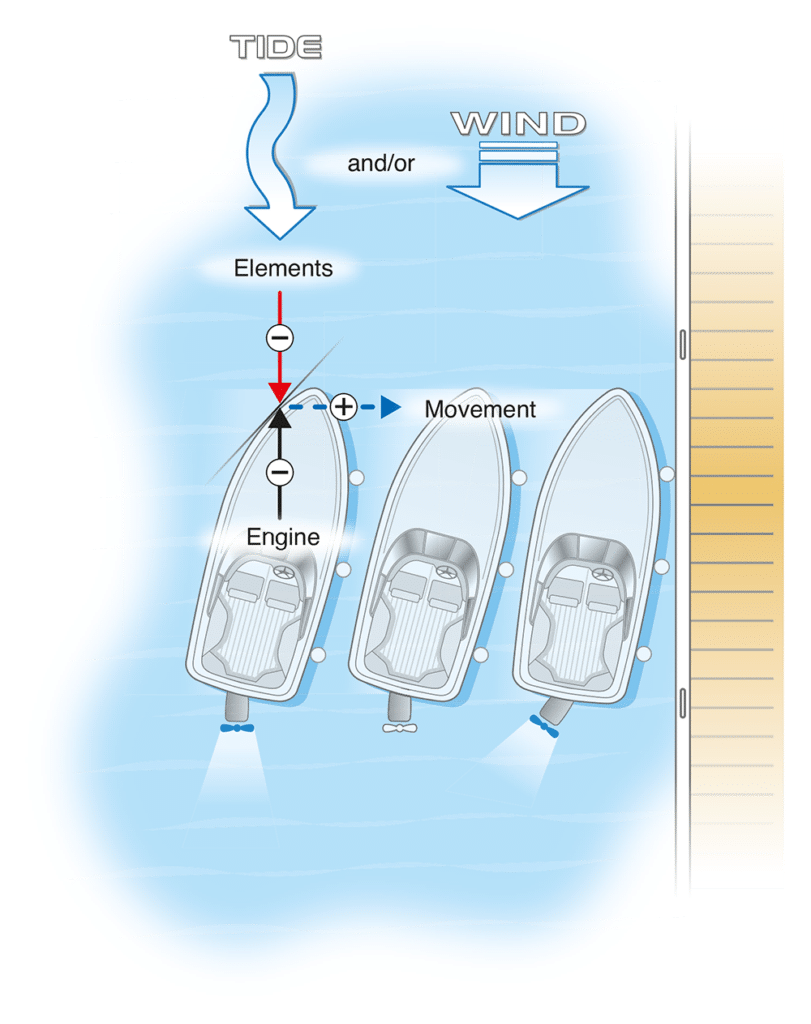

Paul Glatzel is an RYA powerboat trainer and wrote the RYA Powerboat Handbook and the RYA Advanced Powerboat Handbook. He runs Powerboat Training UK and Marine Education in Poole and Lymington (www.powerboattraininguk.co.uk / www.marine-education.co.uk).


